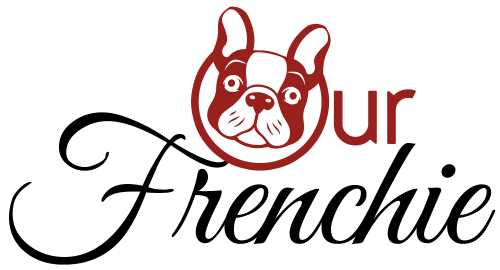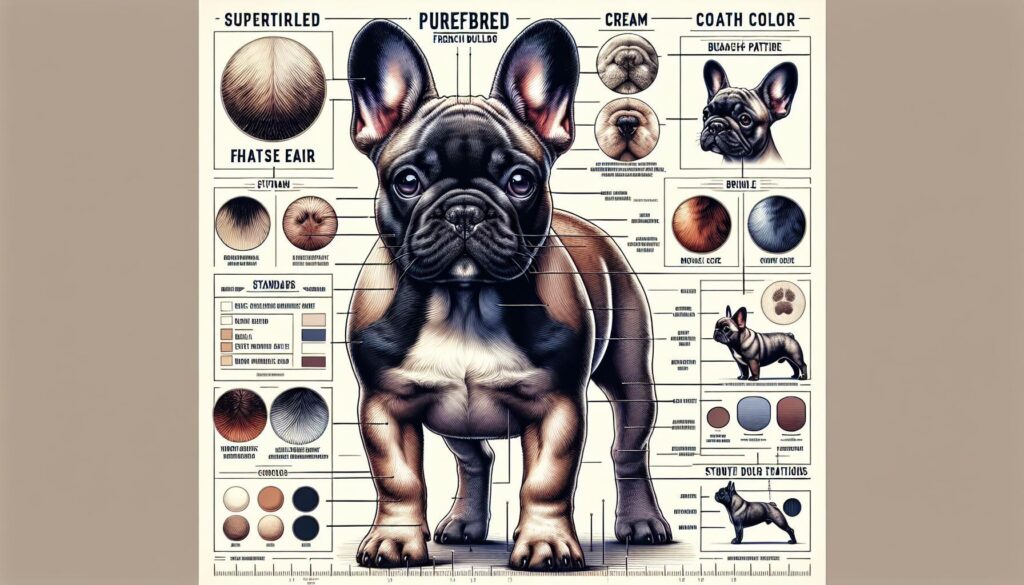About
How to Identify a Purebred French Bulldog
Page Contents
French Bulldogs, with their distinctive bat-like ears and charming personalities, have captured the hearts of dog lovers worldwide. However, as their popularity surges, so does the challenge of ensuring the authenticity of their lineage.Identifying a purebred French Bulldog requires a keen eye for specific physical traits,an understanding of breed standards,and a thorough knowledge of pedigree documentation.This guide will walk you through the essential steps and considerations to help you determine if yoru French bulldog is truly purebred, ensuring you bring home a healthy and genuine companion.
Breed Standards and Key Characteristics
When assessing whether a French Bulldog is purebred, familiarizing yourself with the is crucial. The French Bulldog is a small but robust breed, recognized for its distinctive appearance and charming demeanor. **Key physical traits** include a compact, muscular body, a smooth coat, and a unique “bat ear” shape. The ears should stand erect and be proportionate to the head, which is square and broad.
The **coat color** is another notable indicator. Acceptable colors include brindle, fawn, white, and combinations of these. Unusual colors like black, blue, or merle are not recognized by major kennel clubs and may suggest a mixed lineage. **Markings** such as a black mask,piebald patterns,or white markings are common and accepted in the breed standard.
- Head: Square, with a flat skull and a well-defined stop.
- Eyes: Dark, round, and set wide apart, giving an alert expression.
- Body: Compact and muscular with a broad chest and well-sprung ribs.
- Tail: Short, either straight or corkscrew, but not curly or long.
Behaviorally, French Bulldogs are known for their affectionate and sociable nature. They should exhibit a friendly temperament, being neither aggressive nor overly timid. These characteristics, combined with the physical traits, help in identifying a purebred French Bulldog.
Understanding French Bulldog Colors
French Bulldogs are known for their charming appearance and come in a variety of colors that can sometimes make it challenging to identify a purebred. Understanding these color variations is crucial for anyone interested in this delightful breed.The American Kennel Club (AKC) recognizes specific colors and patterns for French Bulldogs, which can serve as a guide for identifying a purebred.
The recognized colors include:
- Brindle: A dark coat with lighter strands of hair, frequently enough with a pattern resembling tiger stripes.
- Fawn: A light tan color that can range from a pale cream to a deep reddish-brown.
- Cream: A uniform off-white or eggshell color.
- White: A pure,clean white coat.
- Brindle & White: A combination of brindle and white patches.
While these are the standard colors, French Bulldogs can also have unique markings such as a black mask, white markings, or piebald patterns. It’s important to note that some colors, like blue or merle, are not recognized by the AKC and are often the result of crossbreeding, which can lead to health issues.When considering a French Bulldog, ensure that the color aligns with the recognized standards to confirm its purebred status.
Identifying Distinctive Facial Features
French Bulldogs are renowned for their distinctive facial features, which are key indicators of their purebred status. One of the most recognizable characteristics is their bat-like ears. These ears are large, upright, and set high on the head, giving the French Bulldog its alert and perky expression. Unlike other breeds, the ears should not be cropped or altered in any way.
Another hallmark of the French Bulldog’s face is its short, flat muzzle. This feature contributes to the breed’s brachycephalic profile, characterized by a broad, square head. The muzzle should appear compact, with a well-defined stop and a black nose that complements the dog’s overall facial symmetry. Additionally, the eyes of a purebred French Bulldog are typically dark and round, set wide apart, conveying a gentle and affectionate demeanor.
- Wrinkles: A purebred french Bulldog will have soft, loose skin that forms characteristic wrinkles, especially around the face and neck. These folds should be well-defined but not excessive.
- Jaw Structure: The breed is known for its underbite, where the lower jaw protrudes slightly beyond the upper jaw. This feature should be noticeable but not overly pronounced.
By paying close attention to these distinctive facial features, enthusiasts and potential owners can better identify a purebred French Bulldog, ensuring the authenticity and lineage of this charming breed.
Evaluating the body Structure
When examining the body structure of a French Bulldog to determine if it is purebred, there are several key characteristics to consider. **Proportion and balance** are crucial. A purebred French Bulldog should have a compact, muscular build with a broad chest and a well-rounded rib cage. The back should be relatively short, providing a sturdy, solid appearance. Look for a straight top line that gently slopes towards the rear, which is a hallmark of the breed’s structure.
**Head and facial features** are distinctive in French Bulldogs. The head should be large and square,with a flat skull and a well-defined stop between the forehead and the nose. The nose is typically black, even though lighter shades are acceptable in lighter-colored dogs. The eyes are round, dark, and set wide apart, contributing to the breed’s expressive look. The ears, often referred to as “bat ears,” should be upright and set high on the head.
- **Legs and paws**: The legs should be strong and muscular, with the hind legs slightly longer than the front, giving the dog a natural stance. The paws are compact and well-padded, with moderate angulation at the joints.
- **Tail**: A purebred French bulldog’s tail is generally short, either straight or screwed, but not curly. It should be carried low and not extend above the backline.
By paying close attention to these structural features,you can better assess whether a French Bulldog is purebred. Always remember that while physical characteristics are important,consulting with a professional breeder or veterinarian can provide additional assurance and guidance.
Checking Pedigree and Registration
To ensure that your French Bulldog is a purebred,examining its pedigree and registration is crucial. begin by requesting the dog’s pedigree papers from the breeder or seller. These documents should trace the dog’s lineage and provide information about its ancestors, ideally going back at least three generations. Look for names of recognized breeders or kennels known for producing quality French Bulldogs. A reputable breeder should have no problem providing these details and should be able to explain any gaps or anomalies in the lineage.
Another essential step is verifying the dog’s registration with a recognized kennel club, such as the American Kennel Club (AKC) or the Kennel Club (UK). A registered French Bulldog will have a unique registration number, which can be used to confirm its status. **Ensure that the registration is up-to-date** and that the breeder is listed as a member in good standing with the kennel club. You can frequently enough contact the kennel club directly or use their online databases to verify the registration details.
- Request pedigree papers and verify the lineage.
- Check for registration with recognized kennel clubs.
- Ensure that the breeder is reputable and in good standing.
By taking these steps, you can have greater confidence in the authenticity of your French Bulldog’s purebred status, ensuring that you are investing in a healthy and well-bred companion.
Recognizing Common Health Indicators
When assessing the health of a purebred French Bulldog, there are several key indicators to consider. **Breathing patterns** are crucial; French Bulldogs are a brachycephalic breed, which means they have short noses and flat faces. This can lead to breathing difficulties, so it’s essential to observe their respiratory health. Look for signs of labored breathing or excessive snoring, which could indicate underlying issues.
**Skin and coat condition** also offer insights into their health. A healthy French Bulldog should have a smooth, shiny coat without bald patches or excessive shedding. Common skin problems in this breed include allergies and dermatitis, often manifesting as itching, redness, or sores. Regular grooming and vet check-ups can help manage these issues.
- Check for **eye health**: French Bulldogs are prone to eye conditions like cherry eye and cataracts. Clear, shining eyes without excessive tearing or discharge are a good sign.
- Monitor **weight and body condition**: They should have a muscular build but not be overweight. Obesity can exacerbate breathing problems and joint issues.
- Pay attention to **mobility**: Watch for signs of limping or stiffness, as hip dysplasia and other joint problems are common in the breed.
By keeping an eye on these health indicators, you can ensure your French Bulldog remains healthy and happy, while also confirming the breed’s characteristic traits. Regular veterinary visits are essential to address any health concerns promptly.
Consulting a Professional Breeder
When it comes to confirming the pedigree of a French Bulldog, reaching out to a professional breeder can be invaluable. these experts possess extensive knowledge about the breed’s specific characteristics and lineage, offering insights that go beyond what is readily available to the general public. A reputable breeder will provide detailed information about the dog’s ancestry, health clearances, and any breed-specific certifications that verify its purebred status.
Professional breeders frequently enough maintain meticulous records, including **pedigree charts** and **genetic testing results**, which can definitely help verify the authenticity of a French Bulldog’s lineage. They can also assist in identifying key physical traits and behavioral characteristics typical of the breed, such as:
- Compact and muscular build
- Distinctive “bat ears”
- Short, smooth coat
- Playful and adaptable temperament
Moreover, a seasoned breeder can guide potential owners through the nuances of French Bulldog care and maintenance, ensuring that the dog thrives in its new surroundings. This professional consultation not only aids in authenticating the breed but also fosters a deeper understanding and appreciation of what it means to own a purebred French Bulldog.
Avoiding Common Identification Mistakes
When identifying a purebred French Bulldog, it’s crucial to steer clear of common pitfalls that can lead to misidentification. **Physical appearance** is often the first, yet sometimes misleading, aspect to consider. While French Bulldogs are known for their distinctive bat-like ears and compact build, these features alone aren’t definitive proof of purebred status. **color variations** can also be misleading; although the breed standard includes specific colors, some rare hues might not align with the standard but still belong to a purebred Frenchie.
Another common mistake is relying solely on **pedigree papers** without verifying their authenticity.Fraudulent documents are not uncommon in the pet industry, so it’s essential to obtain papers from a reputable source or breeder. Cross-referencing the information with a recognized kennel club can add an extra layer of assurance. Additionally,some people mistakenly assume that a higher price tag guarantees a purebred dog,but this isn’t always the case. Price should never be the sole indicator of pedigree.
- **Verify physical traits** with breed standards but remember exceptions exist.
- **Check pedigree papers** for authenticity and cross-reference with official registries.
- **Don’t equate price with purity**—high cost doesn’t always mean purebred.
In Summary
identifying a purebred French Bulldog requires careful observation of physical traits, temperament, and pedigree verification. By familiarizing yourself with breed standards and consulting reputable breeders or organizations, you can confidently determine the authenticity of a French Bulldog. Remember, owning a purebred dog comes with responsibilities, including ensuring its health and well-being. Whether for companionship or show, understanding the breed’s unique characteristics enhances your appreciation and care for these charming dogs. Stay informed and make thoughtful choices to enjoy a rewarding relationship with your French Bulldog.

